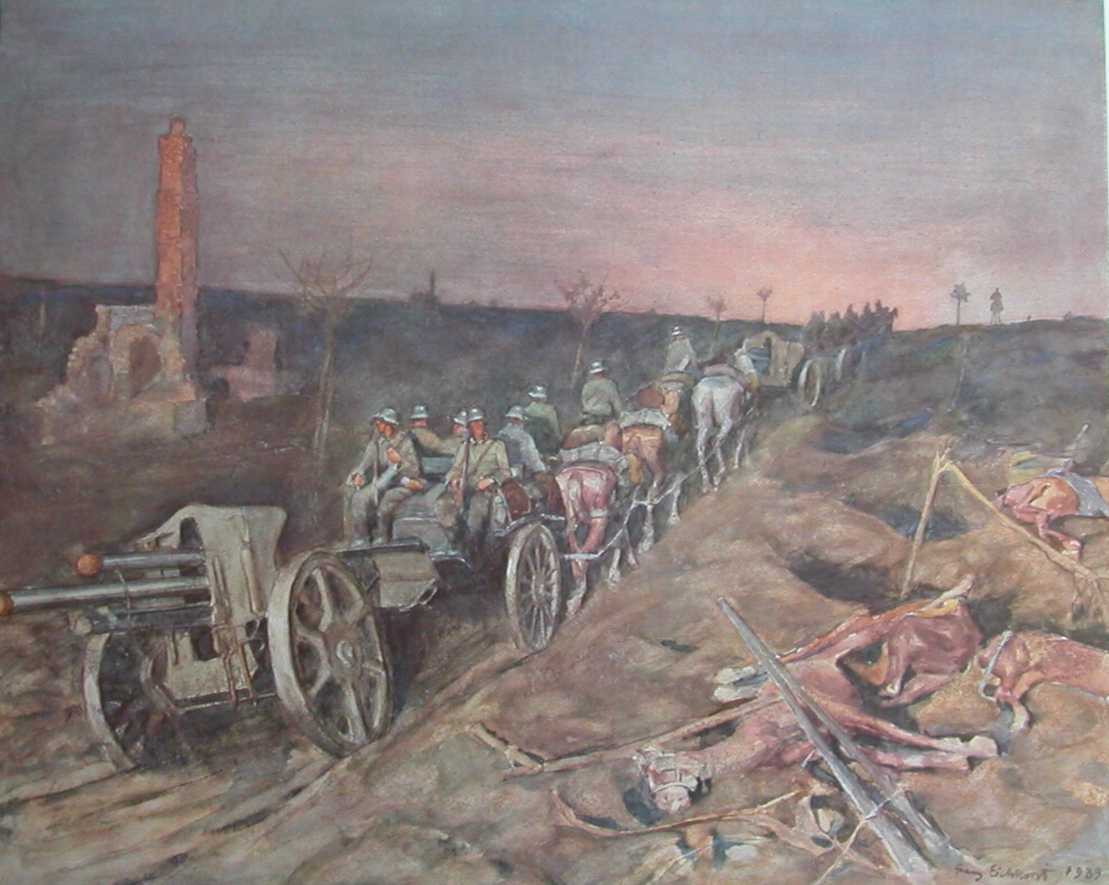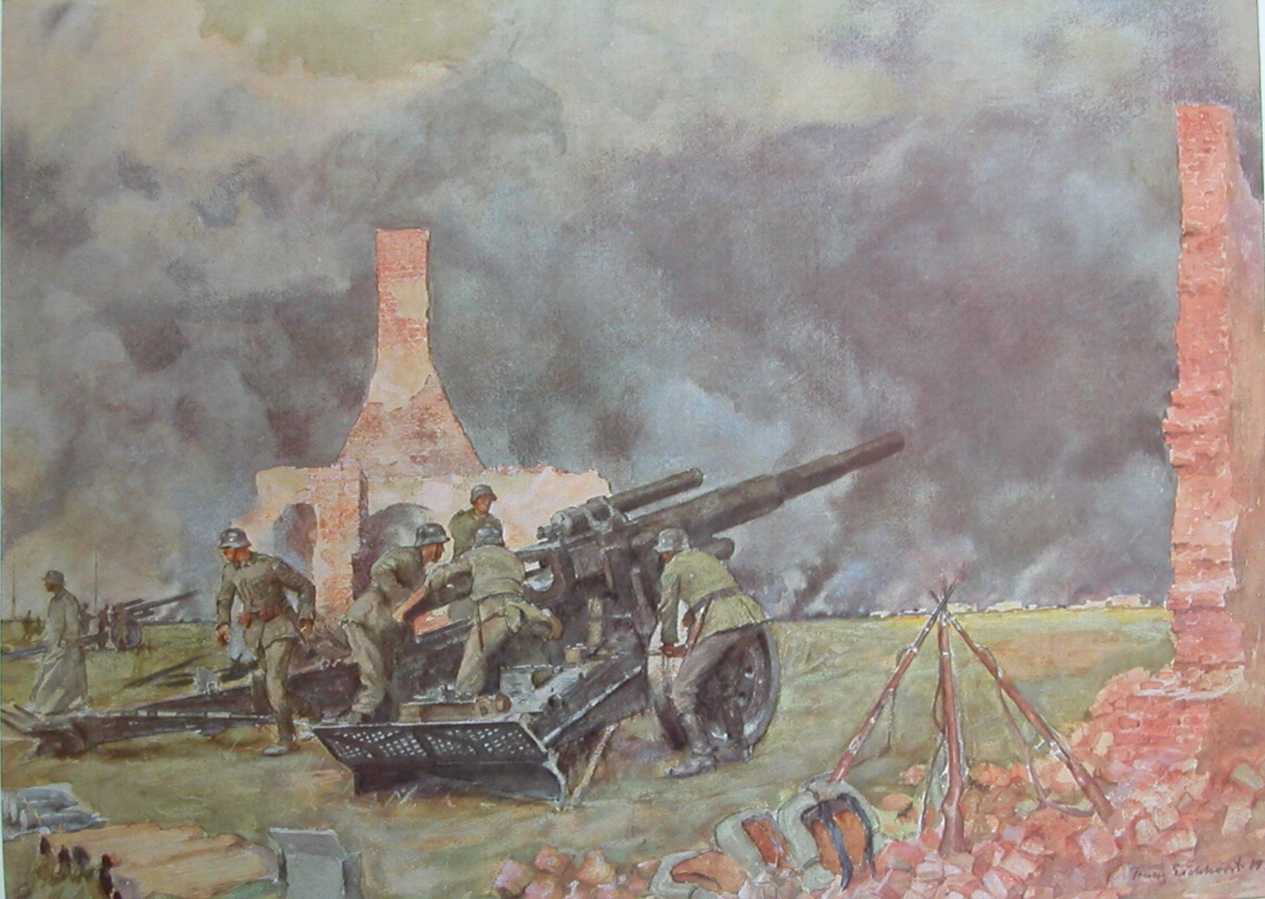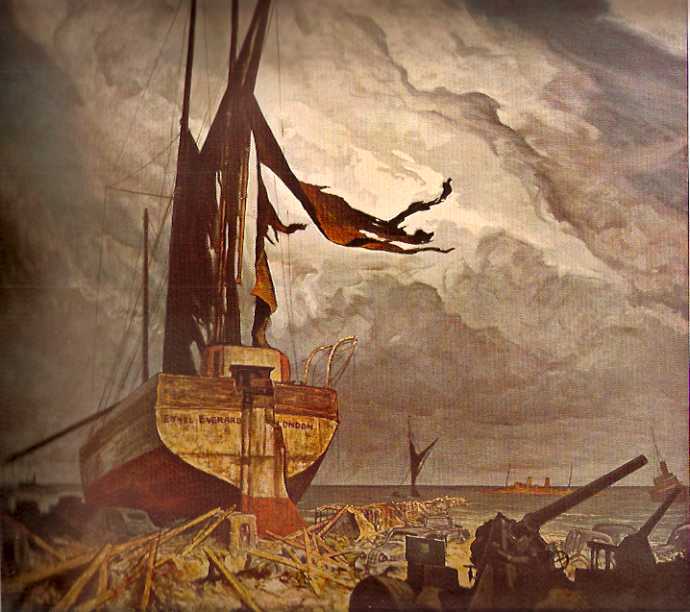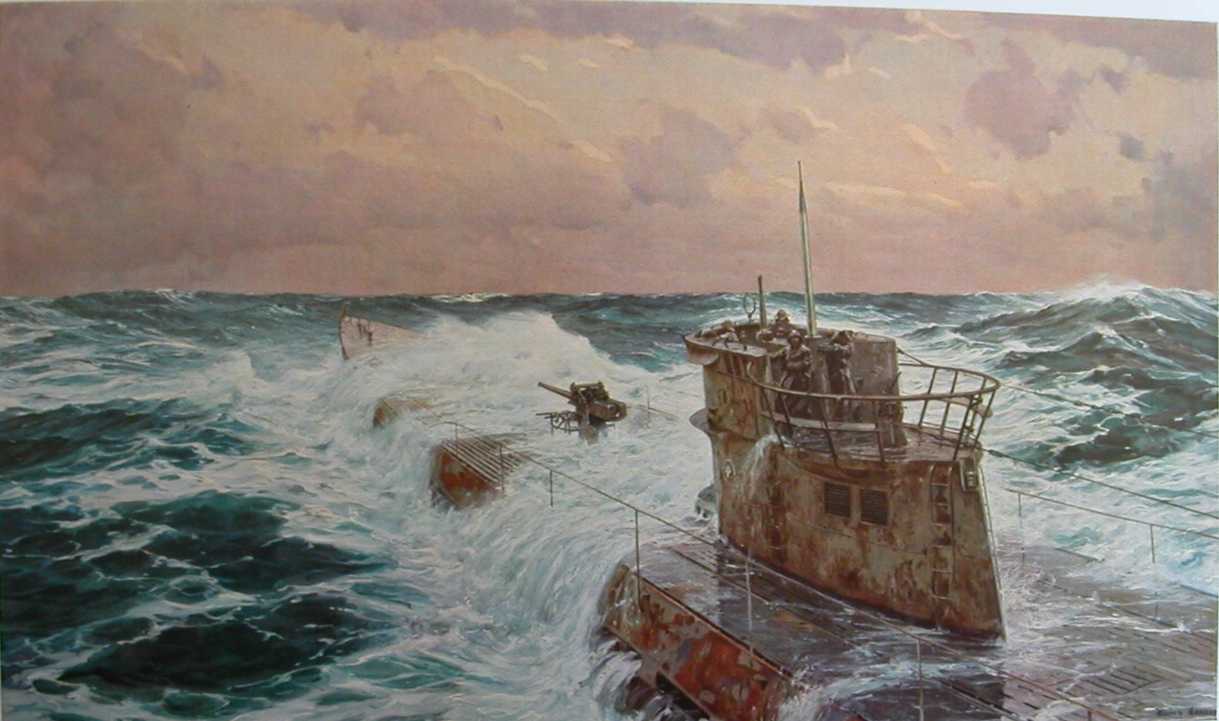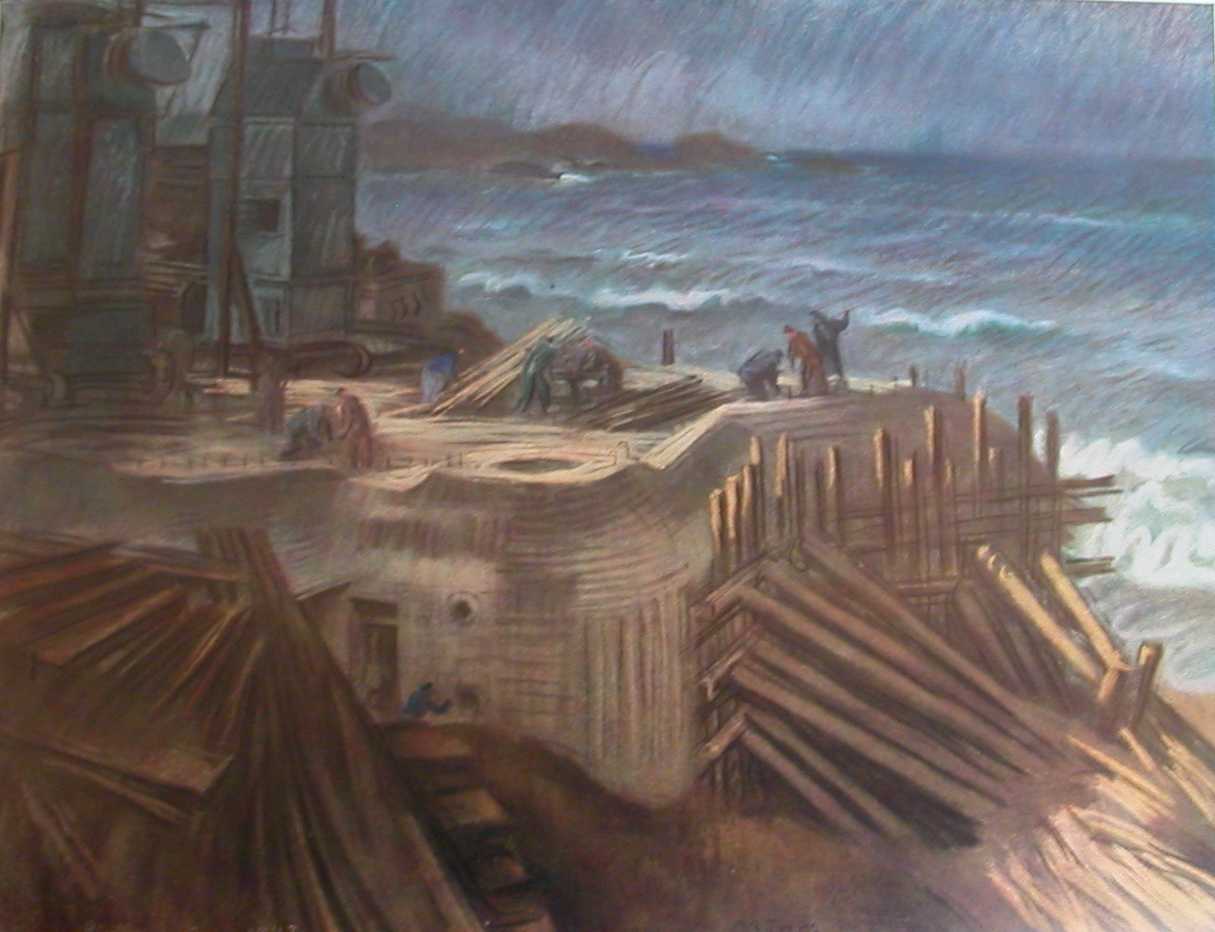Background: The Nazis placed high value on art. Two glossy art magazines, Kunst im Deutschen Reich and Kunst dem Volk were published late into the war, despite desperate paper shortages. Over half of the artworks pictured consisted of pastoral scenes, nude women, or otherwise relatively nonpolitical art. There was, however, a significant amount of military art as well. There were always a number of pieces of war art at the annual exhibition of German art in Munich. Here are sixteen examples. The best collection of such art, by the way, is held by the U.S. Army. More examples of Nazi war art are available on Geoff Walden’s Third Reich in Ruins site.
The source: Kunst im Deutschen Reich and Kunst dem Volk, 1940-1944.
Nazi War Art: 1940-1944

This painting by Wilhelm Sauter is titled “The Eternal Soldier.” The left frame shows German soldiers from World War I, the right frame soldiers from World War II. The Nazis regularly argued that both wars were part of the same struggle, and that in World War II, the work of German soldiers who had fought in World War I was being carried on.
Source: Kunst dem Volk, July/August 1940.
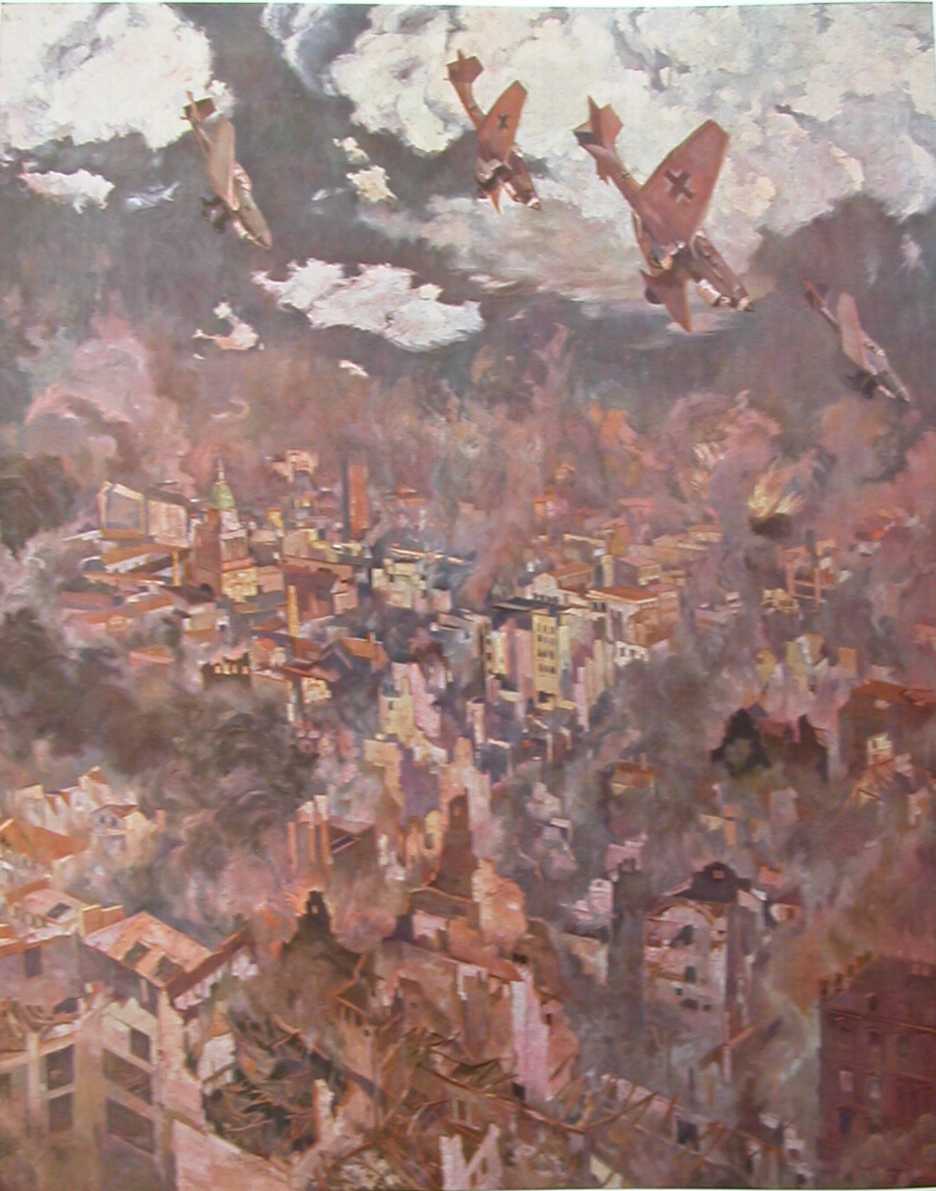
Georg Lebrecht’s painting of Luftwaffe planes bombing an unnamed English city.
Source: Kunst im Deutschen Reich, August/September 1941.

This painting by Hans Schmitz-Wiedenbrück is titled “Workers, Farmers, and Soldiers.” The suggestion is that all are part of the same battle for Germany.
Source: Kunst im Deutschen Reich, August/September 1941.
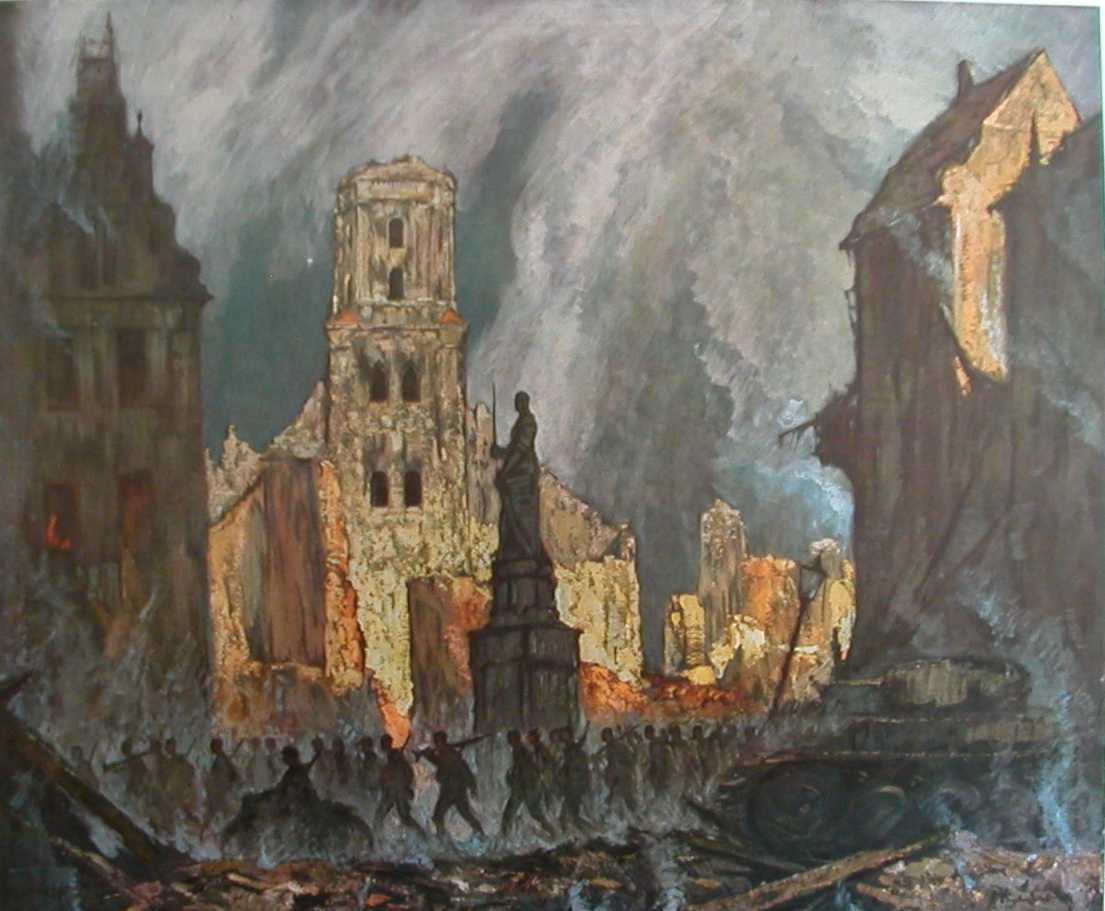
This painting by Otto Engelhardt-Kyffhäuser is titled: “Troops Entering Riga.” This appeared when Germans could reasonably think the campaign in the Soviet Union was going well.
Source: Kunst im Deutschen Reich, August/September 1942.
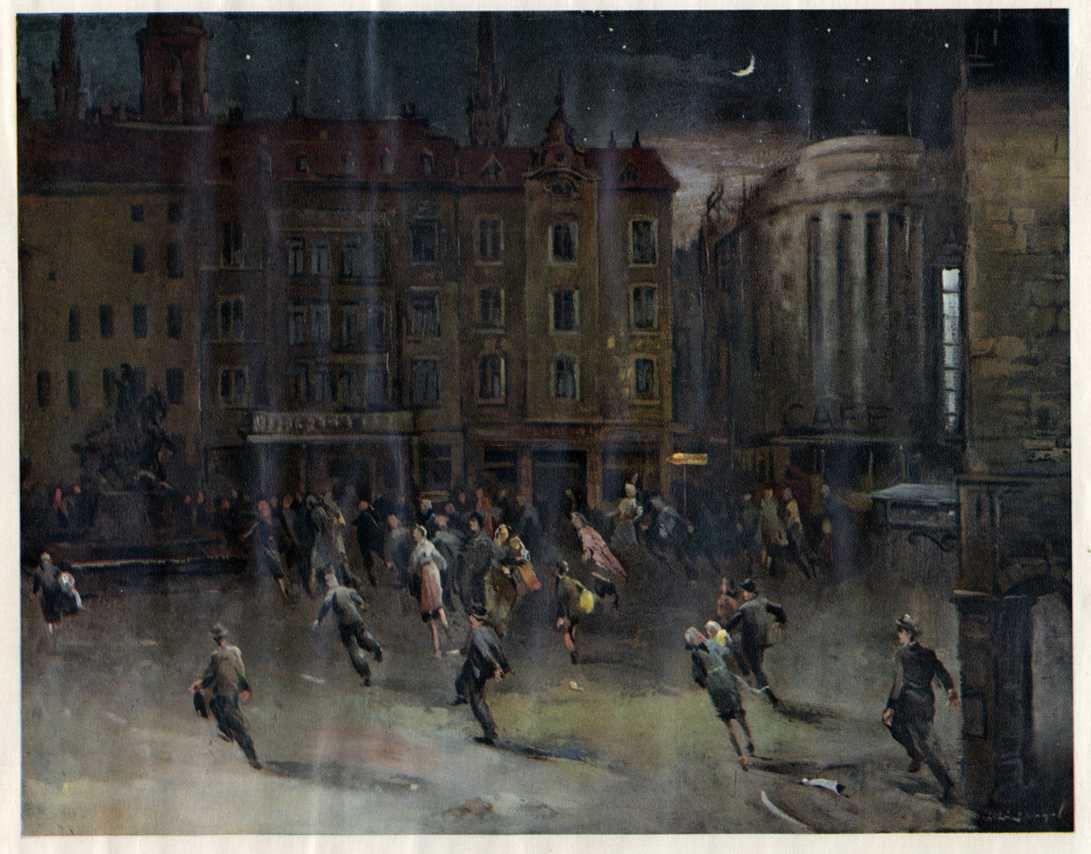
This painting, titled “Air Raid Alarm,” is from a book of paintings on flak defenses published for those manning the guns. Citizens head for air raid shelters.
Source: Flak an Rhein und Ruhr (Münster: Luftgaukommando VI, 1942).
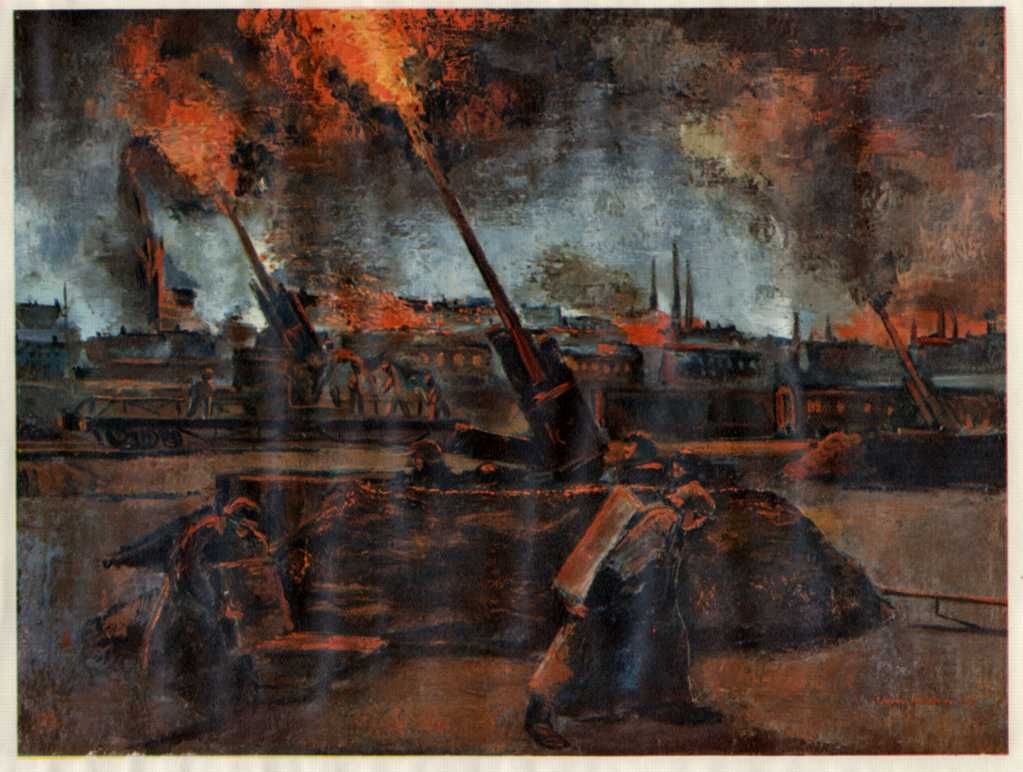
This painting is titled “Flak Firing.”
Source: Flak an Rhein und Ruhr (Münster: Luftgaukommando VI, 1942).
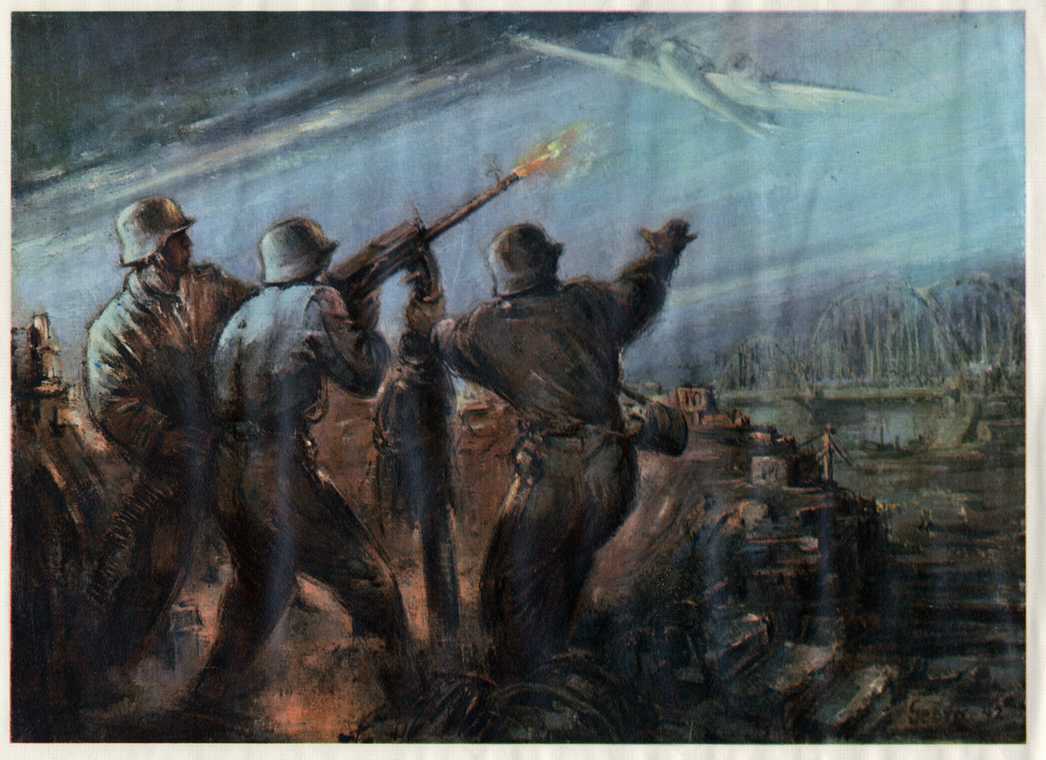
In this painting, a wounded bomber is coming down. The troops are firing at it with around weapons. The title: “Ground Defense.”
Source: Flak an Rhein und Ruhr (Münster: Luftgaukommando VI, 1942).

This painting, titled “Before the Crash,” depicts an Allied bomber about to crash.
Source: Flak an Rhein und Ruhr (Münster: Luftgaukommando VI, 1942).
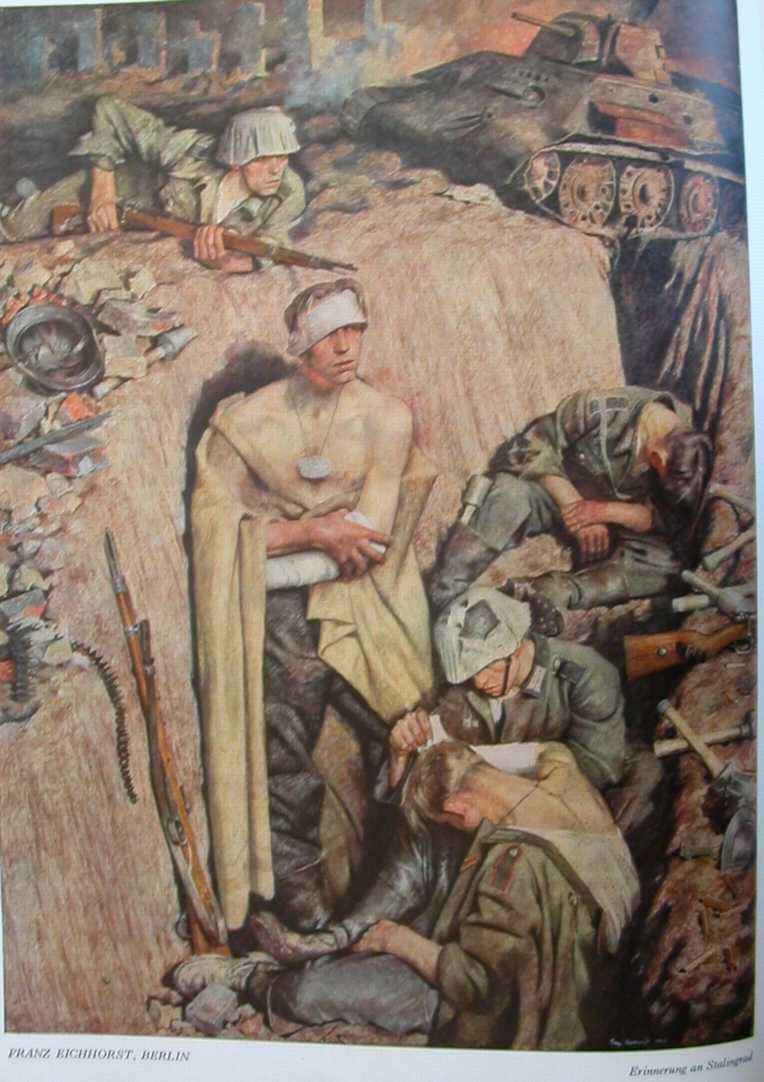
This painting by Franz Eichhorst is titled “Remembrance of Stalingrad.” The painting was displayed at the 1943 “Great German Art Exhibition.” According to Kunst dem Volk: “The pale colors, the splendid presentation, and the solemnity of the moment are emphasized in this picture, which has an almost monumental character. Although the painting demonstrates the artistic understanding of the painter and also his mastery of drawing, one forgets it all because of the artist's splendid work, accepting it as obvious and given. That is probably the best that a painting can do.”
In February 2012 this painting and six others from Hitler’s personal collection were found in a Czech monastery.
Source: Kunst dem Volk, September 1943.



